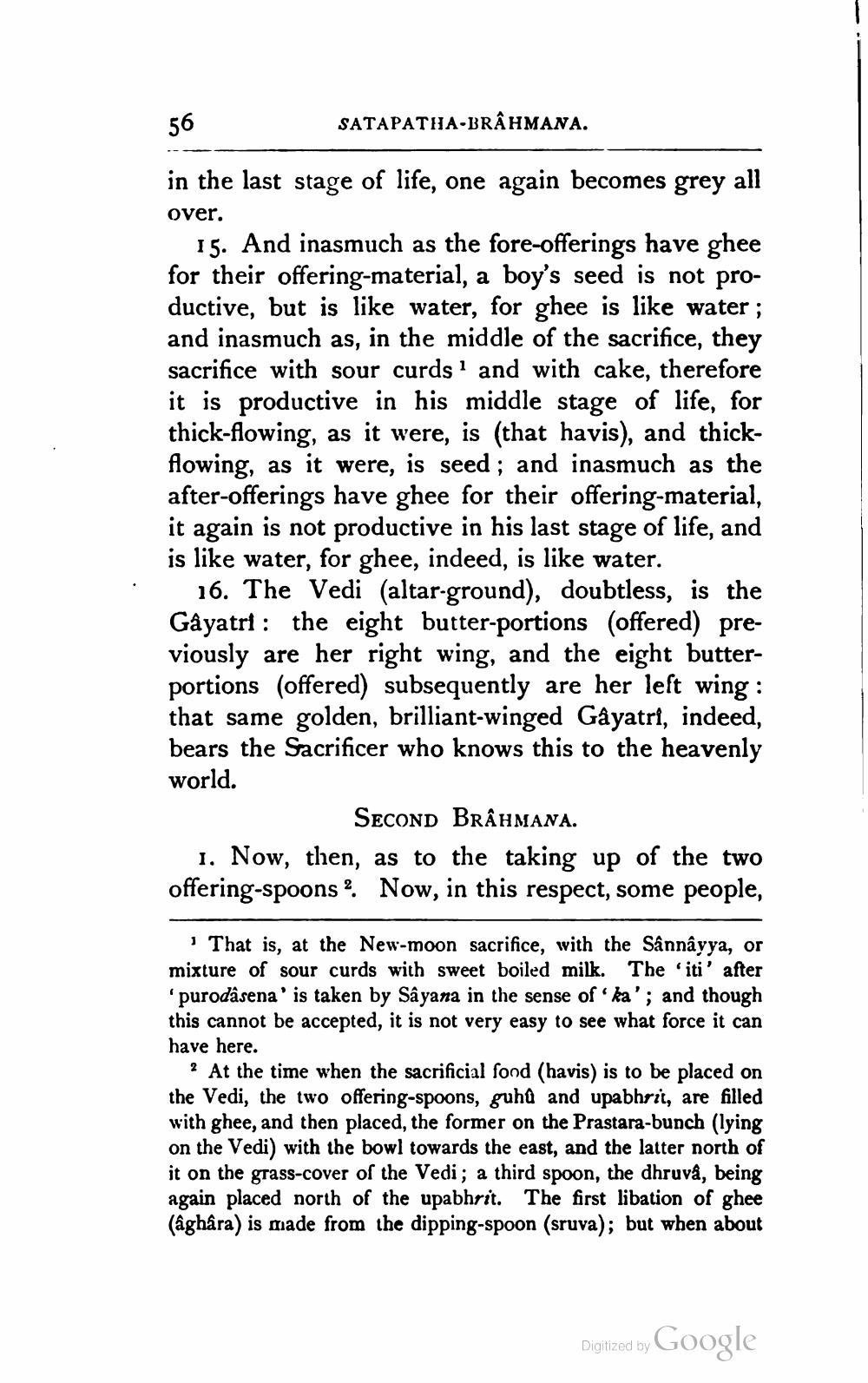________________
56
SATAPATHA-BRAHMANA.
in the last stage of life, one again becomes grey all
over.
1
15. And inasmuch as the fore-offerings have ghee for their offering-material, a boy's seed is not productive, but is like water, for ghee is like water; and inasmuch as, in the middle of the sacrifice, they sacrifice with sour curds and with cake, therefore it is productive in his middle stage of life, for thick-flowing, as it were, is (that havis), and thickflowing, as it were, is seed; and inasmuch as the after-offerings have ghee for their offering-material, it again is not productive in his last stage of life, and is like water, for ghee, indeed, is like water.
16. The Vedi (altar-ground), doubtless, is the Gâyatri the eight butter-portions (offered) previously are her right wing, and the eight butterportions (offered) subsequently are her left wing: that same golden, brilliant-winged Gâyatri, indeed, bears the Sacrificer who knows this to the heavenly world.
SECOND BRAHMANA.
1. Now, then, as to the taking up of the two offering-spoons. Now, in this respect, some people,
That is, at the New-moon sacrifice, with the Sânnâyya, or mixture of sour curds with sweet boiled milk. The 'iti' after 'purodâsena' is taken by Sâyana in the sense of 'ka'; and though this cannot be accepted, it is not very easy to see what force it can have here.
2 At the time when the sacrificial food (havis) is to be placed on the Vedi, the two offering-spoons, guhû and upabhrit, are filled with ghee, and then placed, the former on the Prastara-bunch (lying on the Vedi) with the bowl towards the east, and the latter north of it on the grass-cover of the Vedi; a third spoon, the dhruvâ, being again placed north of the upabhrit. The first libation of ghee (âghâra) is made from the dipping-spoon (sruva); but when about
Digitized by
Google




